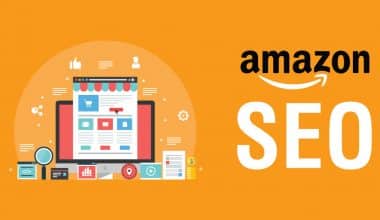E-commerce software platforms facilitate the commercial process of buying and selling online. There are three main types of platforms: SaaS (software-as-a-service), PaaS (platform-as-a-service), and on–premises platforms. Understanding the difference between each, including their benefits, is a vital part of choosing the best type of software for your business’s unique needs and positioning it for the future.
SaaS and PaaS Platforms
Both SaaS and PaaS provide online e-commerce solutions. SaaS platforms incorporate the software element of this solution only, an example being Shopify. Platforms that have a hardware element also are known as PaaS platforms.
These options tend to be best for smaller businesses that are taking their first steps in the world of e-commerce and online selling. Both types of platforms usually necessitate the payment of a monthly fee, as well as the levying of a fee on every transaction made via the platform.
Companies providing SaaS and PaaS platforms typically offer professional setup and support, allow businesses to create a custom online store-front, and, in general, provide the business with a greater degree of control over their selling site.
Website-building platforms are perfect for start-ups and small businesses; they tend to offer drag-and-drop templates so that even those with no experience can create a professional-looking site with e-Commerce functionality.
On-Premises Platforms
This type of e-commerce platform is usually hosted locally by the business itself and managed by its own IT staff, as opposed to SaaS and PaaS platforms, which are set up by another provider and accessed via the cloud.
Features an E-Commerce Platform Should Have
No matter the software on offer, there are some basic features your business will need. Here are the things to check the platform incorporates:
- A well-functioning shopping cart
- An effective search feature
- A payment gateway
There are some other important features that you may want from your e-commerce software, such as:
- A database for storing transaction details
- Inventory management tools
- Customer management features
- Customer support components
Choosing the Best E-Commerce Platform for Your Business
There are several factors to take into account to choose the best e-commerce platform for your business. Your GMV (gross merchandise volume) is key to this. Businesses with a high level of GMV usually require a greater facility for customization, whereas lower GMV businesses tend to need a solution that comes with a range of standard services and is affordable.
For businesses who want to manage and maintain their own e-commerce platform, it will be vital to take into account how its staff will go about doing so. For example, would a WYSIWYG (what you see is what you get) platform be helpful, and is a rich text editor component a requirement?
Other things to consider include the level of security offered by the platform, payment options offered, the nature of the search feature, and how it can integrate with your wider campaigns or other apps and tools your business currently uses.
The Importance of Security
Security of the merchant’s site is vital: the site will be collecting personal data, including payment card numbers or bank details, and so, as such, it could be a target for hacking or other types of malicious attacks. If a site accepts payment card transactions, it must be PCI compliant to operate legally; it’s also vital to be aware that regulations can vary across countries, so what may be allowable in one territory may not be in another.
The Setup Process
When it comes to SaaS and PaaS software and platforms, the setup process is relatively simple. Once the platform has been chosen, the business will work with the platform provider to get it up and running. As part of this process, the provider will take the steps needed to get to grips with the business and what it needs, set up the site, and ensure it looks good and functions properly.
For businesses that wish to create their own on-premises platforms, the process is a little different. The business will need to identify and set its business goals in terms of this platform. For retail businesses, this is likely to drive up revenue, augmenting the income stream coming from its physical outlets. If your business is B2B, you may also want your platform to boost account engagement and drive leads rather than just increase the number of direct purchases coming in.
Final Thoughts – And the Future of e-Commerce Platforms
The majority of businesses now require some form of e-commerce platform. Choosing the one that’ll best suit your business is vital – this can impact your success in generating sales, the strength of your brand, and finding new markets. Use the guide above to help you decide on whether a SaaS, PaaS, or one-premises platform is best for your business.
And the future? Already, we’re seeing the IoT (Internet of Things) becoming increasingly integrated with e-commerce solutions, and this is set to explode over the coming years. Businesses need to be aware of this and stay on top of such emerging e-commerce trends in order to position themselves optimally and be ready for future success.






